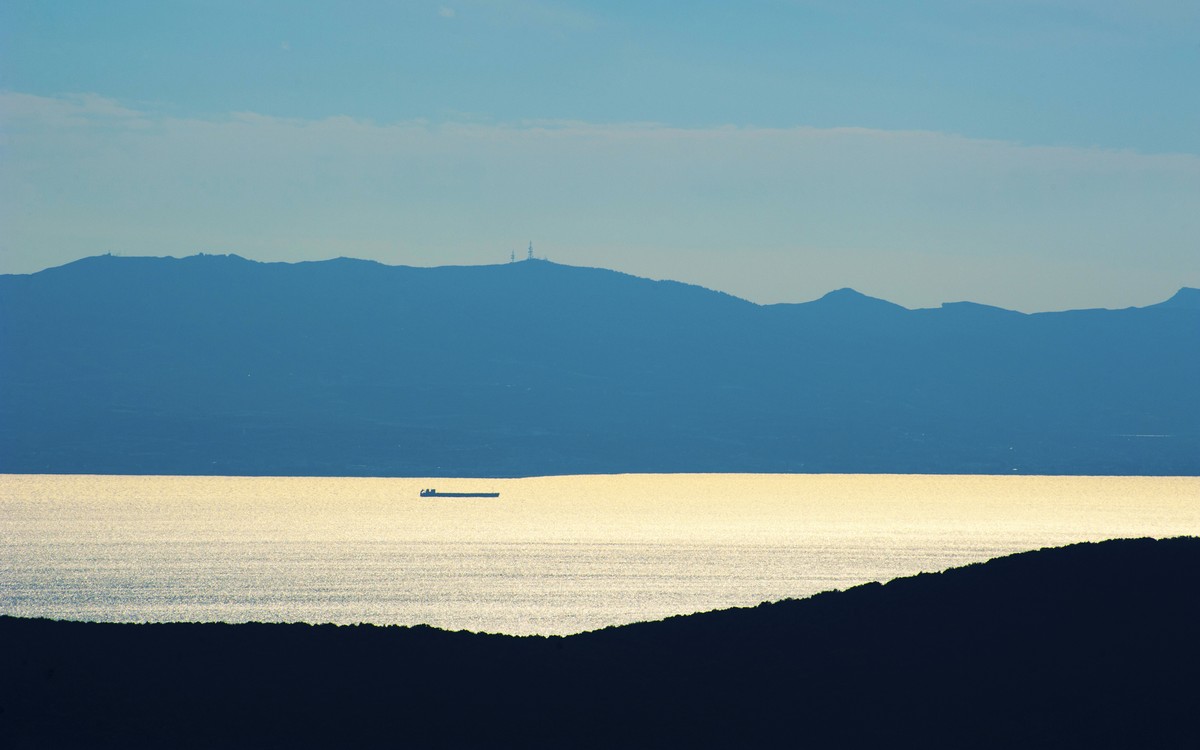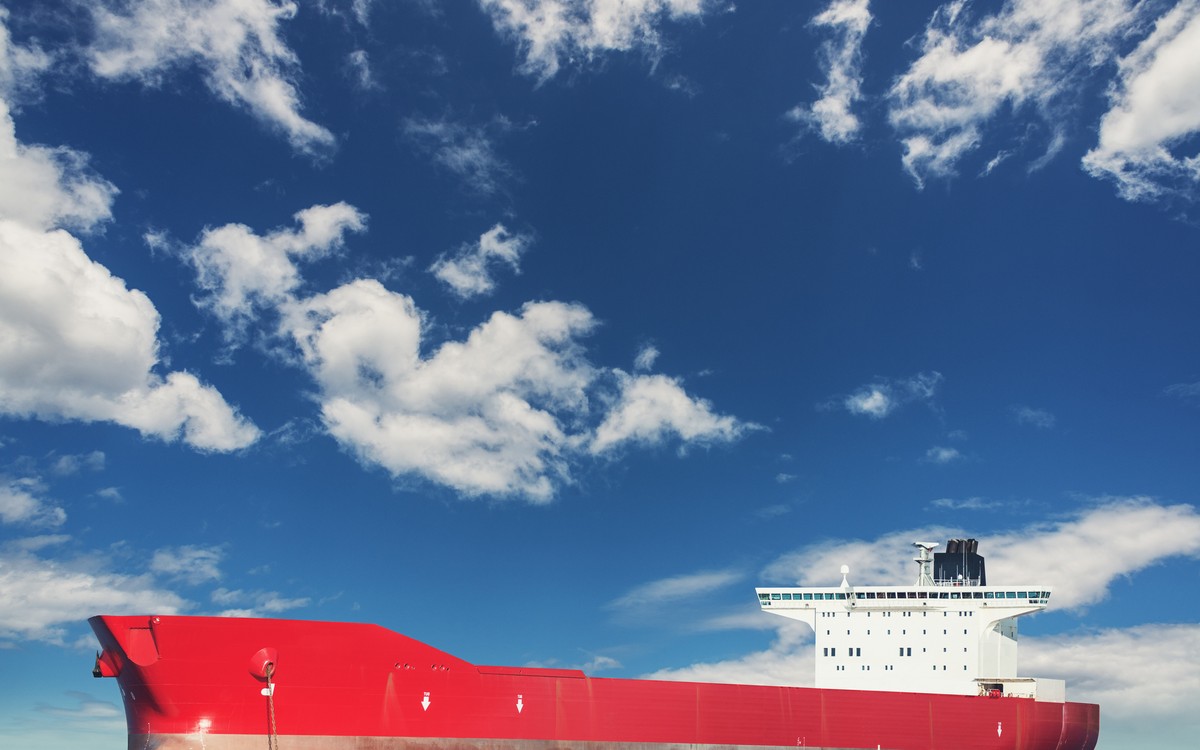Important Issues for VLCC Owners to Consider When Buying a Gas Scrubber
Two months into 2020 and the commercial impacts of IMO 2020 are beginning to take shape.
As predicted by many, prices for marine gasoil (MGO) and new blended low-sulphur fuels (LSFO) have risen sharply. High-sulphur fuel (HSFO) prices have fallen. This trend is set to continue in the short to medium term.
In some ports, the price difference between HSFO and low-sulphur fuel is $100-$120 per tonne.
Shipowners who opted to fit their vessels with marine gas scrubbers, permitting them to continue burning HSFO, are seeing immediate returns on their capital outlay.
Shipowners who opted to fit their vessels with marine gas scrubbers, permitting them to continue burning HSFO, are seeing immediate returns on their capital outlay.
Furthermore, simple economics dictate that the more fuel a ship burns, the greater the financial benefit to the shipowner. Daily bunker consumption of a VLCC can be up to 100 tonnes, perhaps more, per day laden at full speed.
It is for this reason that marine gas scrubber-fitting VLCC owners are reaping maximum rewards post-IMO 2020, with payback times on their investment the shortest of all vessel types.
Though the cost benefits accrued through burning HSFO are of major value, VLCC owners need to consider the particular operational profile and route of each vessel when selecting their scrubbers.
1 . Route
The choice of scrubber type is affected by the vessel’s layout and engine configuration. Capital outlay and operating expenses also vary significantly.
But, the single biggest factor influencing a VLCC owner’s decision regarding scrubber type should be the vessel’s route.
Wet scrubbers, which are the industry-preferred choice over dry scrubbers, are available in three primary options: open loop, closed loop, and hybrid.

Open Loop
The most straightforward scrubbing method. Exhaust gas in the scrubber is treated with seawater, producing sulphuric acid as the sulphur oxide (SOx) in the gas reacts with water.
The natural alkalinity of seawater neutralizes the acid, eliminating the need for chemicals and caustic soda. The process produces wash water which is treated to conform to MEPC 184(59) criteria and then discharged into the sea with no risk of harm to the environment.
KEY CONSIDERATIONS FOR VLCC OWNERS
- Lowest capital investment requirement of the three scrubber types.
- Lower operating costs; seawater eliminates the need for alkalizing chemicals and no shoreside disposal or treatment of washwater is necessary.
- Onboard placement: the overboard discharge needs to be placed well away from sea chests.
- The open loop system relies on high seawater alkalinity. This is not a problem in most of the world’s oceans, but where shipping routes traverse waters with more acidic pH – near coastlines, for example – this is an important consideration. Lower seawater alkalinity reduces scrubbing efficiency, probably requiring recirculation of washwater, which drives up pump power usage and operating costs.
- Compared to the relatively consistent schedules of container liners, for example, VLCCs’ sailing routes are far more sensitive to market, supply and charter conditions. The best choice for VLCCs focused on short course, coastal or variable routes is to use open-loop with the option of switching to compliant fuel in areas which have banned the use of open loop scrubbers.
- Though their reasons for doing so remain a mystery ungrounded in science, a few international ports have banned the use of open loop scrubbers in their waters. These include Singapore, which handled the most international port calls of VLCCs and ULCCs in Q4 2019 (657) and Fujairah, which was the second-busiest port for giant tankers. Supertanker owners operating on these routes would also be advised to use an open loop scrubber with the option of switching to compliant fuel in areas which have banned the use of open loop scrubbers.
Closed Loop
Closed loop systems do not use seawater, but instead, clean exhaust gasses using freshwater mixed with alkalizing chemicals such as caustic soda. The solution is recirculated in a closed loop, with wastewater disposed of in port through dedicated shoreside facilities. Only very small amounts are released into the ocean after being cleaned to IMO specifications.
KEY CONSIDERATIONS FOR VLCC OWNERS
- Washwater and residual waste are stored onboard for disposal in-port. Such systems consequently comply with all regional regulations governing discharge of wastewater into the ocean. This can, however, increase operating costs.
- No dependence on seawater alkalinity, so the system is route agnostic. Offers total flexibility to VLCCs with changeable sailing routes, some of which may bring the ship closer to shore or require her to run near brackish water.
- No territorial water restrictions; closed loop scrubbers are accepted in all international ports.
- Potential logistical issues in securing supply of alkaline treatment chemicals and arranging for discharge of waste from the collection tank. Waste dispensing facilities vary from port to port, as do related costs. These need to be mapped out when planning the ship’s route.
- Requires onboard space allocation for wastewater storage.
- Higher CAPEX than open loop systems.
Hybrid
As the name suggests, a hybrid scrubber combines both systems and allows the operator to oscillate between the two modes depending on needs and conditions. The most versatile of the wet scrubbers.
KEY CONSIDERATIONS FOR VLCC OWNERS
- Delivers ultimate flexibility in managing operating costs according to environmental and regional conditions. In the open ocean, cost-efficiencies can be maximized by using seawater in open loop mode. In areas of low alkalinity or washwater-discharge restriction, closed loop mode can be activated.
- Universal compliance with regional port regulations.
- Requires onboard space allocation for wastewater storage.
- The largest CAPEX per processing unit.
ENVI‑Marine™ systems are fully flexible and can be supplied as open loop, closed loop hybrid-ready, and hybrid systems capable of both open and closed mode operation.

2 . Efficiency
VLCC profit margins are always tight. Keeping operating expenses down is a constant struggle, and an unyielding imperative.
Though scrubbers currently offer VLCC owners excellent gains in the LSFO/HSFO price spread, this differential will likely eventually stabilize at a lower gap.
Fuel remains a VLCC’s heaviest operating cost and shipowners looking for a scrubber continue to be influenced by impact on fuel cost. The right scrubbing solution for vessels of such size delivers maximum fuel and operational efficiency.
KEY CONSIDERATIONS FOR VLCC OWNERS
- Scrubbers do not impact vessel speed. For many VLCC owners, slow steaming remains a key tactic in reducing fuel consumption and carbon emissions. Scrubbers do not hinder this approach in any way.
- It is crucial that a supertanker’s power output is measured against the power requirements of any chosen scrubber system. This includes the power needed to counter the backpressure produced by the exhaust gas cleaning unit. The power consumption of operating a scrubber system is typically between 1-2% of main engine power.
- Scrubbers require ongoing maintenance. Choosing the right scrubber reduces these costs drastically.
- Exhaust gas cleaning technologies are not created equal. Though wet scrubbers all work on the same principles, execution differs radically from system to system. Intelligent engineering delivers a competitive advantage.
- Scrubbers require an appropriate level of capital investment. After all, they convert exhaust fumes into breathable air. In order to guarantee ROI, owners need to be certain that the chosen system is efficient and effective enough to ensure regulatory compliance well into the future, not just the next couple of years.
Pacific Green Technologies’ ENVI‑Marine™ scrubbers employ advanced technology delivering incomparable efficiency.
These gains are obtained through the scrubber’s patented TurboHead™ structure.
The flue gases are first quenched, then cleaned, through a continuous spray of fresh seawater or another alkaline solution. As the downward spray meets the rising gas, PGMT’s TurboHead™ technology causes the gas and water to mix and create a turbulent ‘froth,’, or ‘foam’.
This froth is the key to optimally efficient resource utilization. By producing millions of tiny bubbles through high-energy agitation, the system maximizes surface area and positive contact.
Unlike other systems in which the flue gases are exposed to non-uniform spray coverage, the TurboHead™ requires all flue emissions to pass through this highly active foam, producing exceptional and predictable results with overall lower energy input.
No moving parts or media to replace in the scrubber also mean lower maintenance time and costs.
Technology of this grade dramatically lowers operational costs and reduces the payback time of the investment. ENVI-Marine™ far exceeds the emissions quality requirements set for ECAs and IMO 2020, whether operating in open or closed modes, while also offering industry-leading ROI.
3 . Installation and Support
The physical and logistical requirements of scrubber fitment can be intimidating, and without reliable support, scrubber systems can become liabilities.
It needn’t be this way, though.
KEY CONSIDERATIONS FOR VLCC OWNERS
- The common concern around installation expenses of scrubbers are elevated among VLCC and ULCC shipowners who risk high fees and major opportunity costs of non-trade while their vessels are on the blocks.
- Size matters. Scrubbers take up a lot of space and must be carefully planned for in the ship design. This is also a trickier issue in retrofits than new builds.
- Qualified technical assessment is key as alterations to mechanical areas such as funnels and the engine room may be necessary.
- Technical guidance is also required to determine the best engine-scrubber configuration on a tanker. Options include separate scrubbers for each engine and boiler or one scrubbing unit for multiple engines and boilers. Separate units offer greater operational flexibility and encourage lower OPEX through higher efficiencies. With more equipment to install, however, CAPEX costs and space requirements are higher. Combined units save on space and capital investment, but operation is often less efficient, especially when not all engines and boilers are running.
GMT’s ENVI-Marine™ system is smaller, more efficient, cheaper to install and 20% cheaper to run than leading competitors’ offerings. Its compact, flexible rectangular shape creates the smallest possible footprint.
Multiple options satisfy the challenges of different engine/funnel configurations on VLCCs.
ENVI-Marine(N) is an external installation that fits adjacent to an existing exhaust stack.
ENVI-Marine(E) is an enclosed installation that fits within an existing exhaust stack.
It is critical that scrubber suppliers are able to mitigate risks, offer flexible installation, strip waiting times, and provide ongoing technical support.
Only large-scale providers like Pacific Green Technologies (PGT) are able to offer these types of assurances. Right now, PGT are producing one exhaust scrubber every 48 hours from their ten factories in China.
Large-scale production is supported by a global service network of engineers and specialists who are able to deliver consultation and support at ports across the world.
In the vast majority of fitment scenarios, owners also avoid losses of time and revenue by skipping dry docks.
PGT’s Global Service Team surveys the customer fleet, draft a plan and meet the vessels in a port of mutual convenience where the ENVI-Marine™ device is installed from a combination of prebuilt and custom-built components.
Conclusion
The tanker industry’s fortunes have always fluctuated, but in recent years companies have needed to be especially vigilant of operating expenses in order to survive.
Of all vessel classes, VLCCs and ULCCs stand to benefit the most from investment in a marine gas scrubber, even once the high fuel price differentials of early 2020 even out. In order to gain sustainable long-term returns, however, owners need to ensure they choose their scrubber supplier carefully.
Selecting a partner that can balance technological innovation and engineering capability with international reach and trustworthy support will not only be a good business decision - it will be a competitive advantage.
Would you like to discuss more?
Our global team of advisors with years of combined experience in the marine sector are on hand to discuss your project.